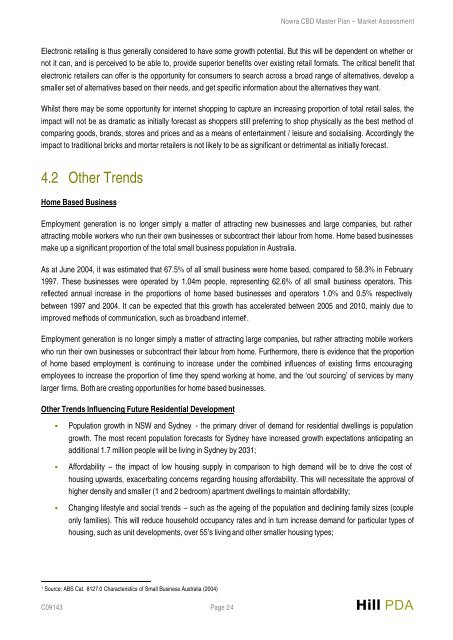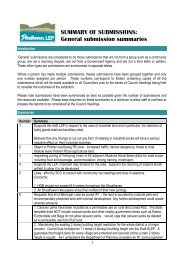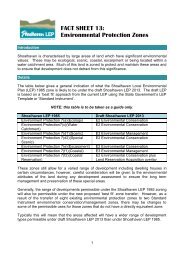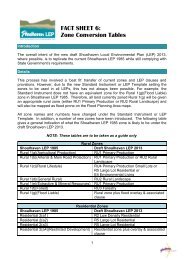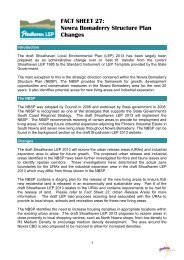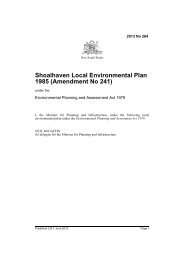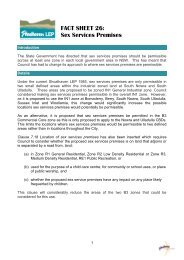Background_E_Market_Assessment - Shoalhaven City Council ...
Background_E_Market_Assessment - Shoalhaven City Council ...
Background_E_Market_Assessment - Shoalhaven City Council ...
You also want an ePaper? Increase the reach of your titles
YUMPU automatically turns print PDFs into web optimized ePapers that Google loves.
Nowra CBD Master Plan – <strong>Market</strong> <strong>Assessment</strong>Electronic retailing is thus generally considered to have some growth potential. But this will be dependent on whether ornot it can, and is perceived to be able to, provide superior benefits over existing retail formats. The critical benefit thatelectronic retailers can offer is the opportunity for consumers to search across a broad range of alternatives, develop asmaller set of alternatives based on their needs, and get specific information about the alternatives they want.Whilst there may be some opportunity for internet shopping to capture an increasing proportion of total retail sales, theimpact will not be as dramatic as initially forecast as shoppers still preferring to shop physically as the best method ofcomparing goods, brands, stores and prices and as a means of entertainment / leisure and socialising. Accordingly theimpact to traditional bricks and mortar retailers is not likely to be as significant or detrimental as initially forecast.4.2 Other TrendsHome Based BusinessEmployment generation is no longer simply a matter of attracting new businesses and large companies, but ratherattracting mobile workers who run their own businesses or subcontract their labour from home. Home based businessesmake up a significant proportion of the total small business population in Australia.As at June 2004, it was estimated that 67.5% of all small business were home based, compared to 58.3% in February1997. These businesses were operated by 1.04m people, representing 62.6% of all small business operators. Thisreflected annual increase in the proportions of home based businesses and operators 1.0% and 0.5% respectivelybetween 1997 and 2004. It can be expected that this growth has accelerated between 2005 and 2010, mainly due toimproved methods of communication, such as broadband internet 1 .Employment generation is no longer simply a matter of attracting large companies, but rather attracting mobile workerswho run their own businesses or subcontract their labour from home. Furthermore, there is evidence that the proportionof home based employment is continuing to increase under the combined influences of existing firms encouragingemployees to increase the proportion of time they spend working at home, and the ‘out sourcing’ of services by manylarger firms. Both are creating opportunities for home based businesses.Other Trends Influencing Future Residential Development• Population growth in NSW and Sydney - the primary driver of demand for residential dwellings is populationgrowth. The most recent population forecasts for Sydney have increased growth expectations anticipating anadditional 1.7 million people will be living in Sydney by 2031;• Affordability – the impact of low housing supply in comparison to high demand will be to drive the cost ofhousing upwards, exacerbating concerns regarding housing affordability. This will necessitate the approval ofhigher density and smaller (1 and 2 bedroom) apartment dwellings to maintain affordability;• Changing lifestyle and social trends – such as the ageing of the population and declining family sizes (coupleonly families). This will reduce household occupancy rates and in turn increase demand for particular types ofhousing, such as unit developments, over 55’s living and other smaller housing types;1Source: ABS Cat. 8127.0 Characteristics of Small Business Australia (2004)C09143 Page 24 Hill PDA


